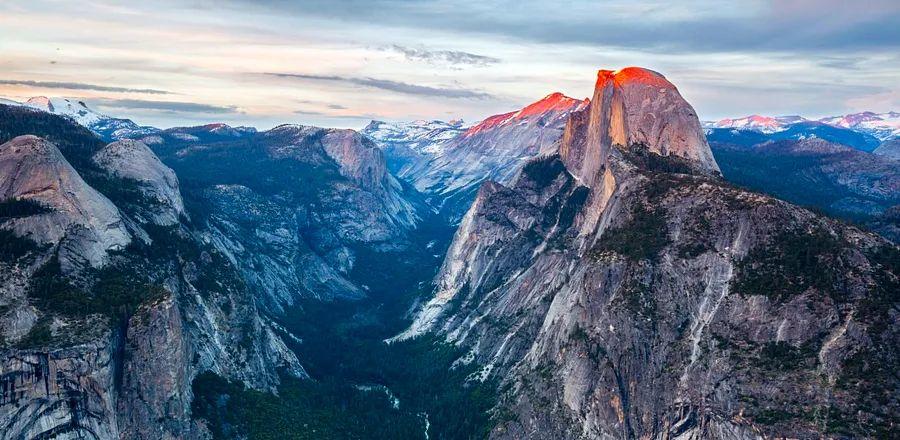These UNESCO World Heritage Glaciers Are Predicted to Vanish by 2050

Among the vast array of UNESCO World Heritage sites, 50 host glaciers. Alarmingly, glaciers in one-third of these sites are projected to disappear by 2050. However, there is still hope for the glaciers in the remaining two-thirds, provided that immediate and decisive climate action is taken, according to a recent report from the United Nations Educational, Scientific and Cultural Organization (UNESCO).
This report was published just before this week's United Nations climate summit, COP27, serving as a vital call to action for global leaders convening in Egypt.
"Only a swift reduction in our CO2 emissions can preserve glaciers and the remarkable biodiversity reliant on them," UNESCO emphasized in its report dated November 3. "COP27 will play a pivotal role in identifying solutions to this crisis," it added.
UNESCO World Heritage sites that include glaciers account for 18,600 of these slow-moving ice masses, representing nearly 10 percent of the Earth's glacierized regions. A study conducted by UNESCO in collaboration with the International Union for Conservation of Nature (IUCN) revealed that these glaciers are losing 58 billion tons of ice annually—equivalent to the total water consumption of France and Spain combined.
The report indicates that glaciers in one-third of the sites are likely to disappear by 2050, regardless of our efforts to limit global temperature increases. "However, it remains possible to preserve the glaciers in the remaining two-thirds of sites if the temperature rise stays below 1.5°C compared to pre-industrial levels," stated UNESCO.

Photo by Shutterstock
Notable UNESCO World Heritage Glaciers at Risk
- Glaciers in Yellowstone National Park
Status: Highly likely to vanish by 2050 - Glaciers in Yosemite National Park
Status: Highly likely to vanish by 2050 - Glaciers in Africa
Status: All UNESCO World Heritage sites with glaciers in Africa are expected to disappear by 2050, including Kilimanjaro National Park and Mount Kenya - Glaciers in Three Parallel Rivers of Yunnan Protected Areas (China)
Status: The fastest melting glacier on the UNESCO list, with the highest mass loss since 2000 (57.2 percent) - Glaciers in Pyrenees Mont Perdu (France and Spain)
Status: Highly likely to vanish by 2050 - Glaciers in the Dolomites (Italy)
Status: Highly likely to vanish by 2050
Is it feasible to limit global warming to 1.5°C?
The question of whether we can keep global warming below 1.5°C—a threshold that, if crossed, could lead to irreversible harm for glaciers, ecosystems, and dire consequences for vulnerable communities, wildlife, and landscapes—is a crucial topic being examined by nearly 200 delegates at COP27 this week. A report released earlier this year by the World Meteorological Organization revealed a 50% chance that the average global temperature could rise by 1.5°C at least once over the next five years.
With a growing urgency due to rising sea levels, floods, droughts, heatwaves, wildfires, and storms, COP27 leaders have reconvened this year to push for significant changes that could make the 1.5°C limit established by the Paris Climate Agreement achievable.
"All aspects of human activity must align with our commitment under the Paris Agreement to strive to keep the temperature rise to 1.5 degrees," emphasized U.N. Climate Change executive secretary Simon Stiell in his opening speech at COP27 on November 7.
U.N. organizations have urged countries and private companies to fund, commit to, and implement their net-zero carbon pledges, as reducing and eliminating greenhouse gas emissions is widely viewed as the key strategy to achieve the 1.5°C goal.
UNESCO hopes that alongside the ambitious carbon emission reduction targets being advocated at COP27, an international fund will be established for glacier monitoring and conservation. This fund would support further research, implement early warning systems, and carry out measures to mitigate disaster risks for the Earth's invaluable ice resources.
"Half of humanity relies directly or indirectly on glaciers for their water supply, whether for domestic purposes, agriculture, or energy," stated UNESCO. "Glaciers are vital to biodiversity, sustaining numerous ecosystems. When glaciers melt at an alarming rate, millions risk facing water shortages and an increased likelihood of natural disasters like flooding, while many more could be displaced due to rising sea levels."

1

2

3

4

5
Evaluation :
5/5